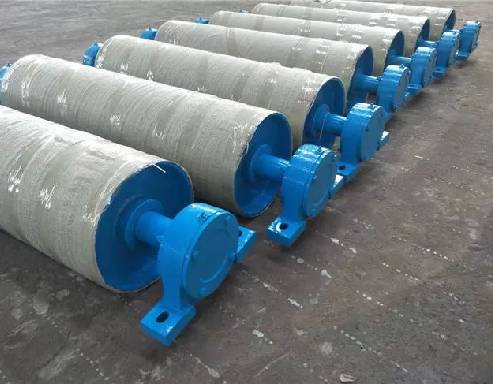 Afrikaans
Afrikaans  Albanian
Albanian  Amharic
Amharic  Arabic
Arabic  Armenian
Armenian  Azerbaijani
Azerbaijani  Basque
Basque  Belarusian
Belarusian  Bengali
Bengali  Bosnian
Bosnian  Bulgarian
Bulgarian  Catalan
Catalan  Cebuano
Cebuano  Corsican
Corsican  Croatian
Croatian  Czech
Czech  Danish
Danish  Dutch
Dutch  English
English  Esperanto
Esperanto  Estonian
Estonian  Finnish
Finnish  French
French  Frisian
Frisian  Galician
Galician  Georgian
Georgian  German
German  Greek
Greek  Gujarati
Gujarati  Haitian Creole
Haitian Creole  hausa
hausa  hawaiian
hawaiian  Hebrew
Hebrew  Hindi
Hindi  Miao
Miao  Hungarian
Hungarian  Icelandic
Icelandic  igbo
igbo  Indonesian
Indonesian  irish
irish  Italian
Italian  Japanese
Japanese  Javanese
Javanese  Kannada
Kannada  kazakh
kazakh  Khmer
Khmer  Rwandese
Rwandese  Korean
Korean  Kurdish
Kurdish  Kyrgyz
Kyrgyz  Lao
Lao  Latin
Latin  Latvian
Latvian  Lithuanian
Lithuanian  Luxembourgish
Luxembourgish  Macedonian
Macedonian  Malgashi
Malgashi  Malay
Malay  Malayalam
Malayalam  Maltese
Maltese  Maori
Maori  Marathi
Marathi  Mongolian
Mongolian  Myanmar
Myanmar  Nepali
Nepali  Norwegian
Norwegian  Norwegian
Norwegian  Occitan
Occitan  Pashto
Pashto  Persian
Persian  Polish
Polish  Portuguese
Portuguese  Punjabi
Punjabi  Romanian
Romanian  Russian
Russian  Samoan
Samoan  Scottish Gaelic
Scottish Gaelic  Serbian
Serbian  Sesotho
Sesotho  Shona
Shona  Sindhi
Sindhi  Sinhala
Sinhala  Slovak
Slovak  Slovenian
Slovenian  Somali
Somali  Spanish
Spanish  Sundanese
Sundanese  Swahili
Swahili  Swedish
Swedish  Tagalog
Tagalog  Tajik
Tajik  Tamil
Tamil  Tatar
Tatar  Telugu
Telugu  Thai
Thai  Turkish
Turkish  Turkmen
Turkmen  Ukrainian
Ukrainian  Urdu
Urdu  Uighur
Uighur  Uzbek
Uzbek  Vietnamese
Vietnamese  Welsh
Welsh  Bantu
Bantu  Yiddish
Yiddish  Yoruba
Yoruba  Zulu
Zulu roller conveyor parts
Understanding Roller Conveyor Parts
Roller conveyors are essential components in various industries, facilitating the movement of goods, products, and materials efficiently. These systems are particularly valued for their simplicity, durability, and ability to handle heavy loads. To fully appreciate how roller conveyors work, it’s important to understand their key parts and their functions.
At the heart of any roller conveyor is the roller itself. Rollers are cylindrical components that allow products to move smoothly along the conveyor line. They are typically made of materials like steel, plastic, or aluminum, and can vary in diameter and length depending on the specific application. Rollers can be powered or non-powered, with powered rollers using a motor to drive movement, while non-powered rollers rely on gravity.
Next, we have the frame, which serves as the structural foundation of the conveyor system. The frame provides support for the rollers and defines the pathway along which items will travel. It is typically constructed from robust materials such as steel or aluminum to ensure stability and endurance under heavy loads.
Drive systems are crucial in powered roller conveyors. These systems may consist of a motor, a gearbox, and associated pulleys or belts to facilitate the movement of rollers. The motor powers the movement, while the gearbox helps control the speed and torque, allowing for adjustable settings according to the specific requirements of the operation.
roller conveyor parts

Another important component is the belt. In cases where rollers are powered, a belt can be used to connect various rollers, ensuring synchronized movement and efficiently distributing load. This is commonly seen in line shafts where a single motor can drive multiple rollers at once, enhancing the efficiency of the system.
End stops and side guides are features that provide additional control over the movement of items on the conveyor. End stops prevent items from rolling off the end of the conveyor, while side guides help to keep products aligned and reduce the risk of jams and misalignment.
In terms of accessories, roller conveyors may come with various add-ons such as sensors, controllers, and maintenance equipment to ensure smooth operation. Sensors can detect the presence or absence of items on the conveyor, facilitating automation processes, while controllers help manage the speed and operation of the drive system.
Lastly, maintenance of roller conveyor parts is crucial for ensuring longevity and optimal performance
. Regularly inspecting rollers for wear and tear, lubricating moving components, and checking the electrical systems can significantly prolong the lifespan of the conveyor system.In conclusion, understanding roller conveyor parts is essential for businesses to operate effectively. By appreciating the roles of each component—from rollers and frames to drive systems and accessories—companies can optimize their conveyor systems, improve productivity, and enhance overall operational efficiency. Whether used in manufacturing, warehousing, or distribution, roller conveyors remain an indispensable part of modern material handling solutions.
-
Revolutionizing Conveyor Reliability with Advanced Rubber Lagging PulleysNewsJul.22,2025
-
Powering Precision and Durability with Expert Manufacturers of Conveyor ComponentsNewsJul.22,2025
-
Optimizing Conveyor Systems with Advanced Conveyor AccessoriesNewsJul.22,2025
-
Maximize Conveyor Efficiency with Quality Conveyor Idler PulleysNewsJul.22,2025
-
Future-Proof Your Conveyor System with High-Performance Polyurethane RollerNewsJul.22,2025
-
Driving Efficiency Forward with Quality Idlers and RollersNewsJul.22,2025





























